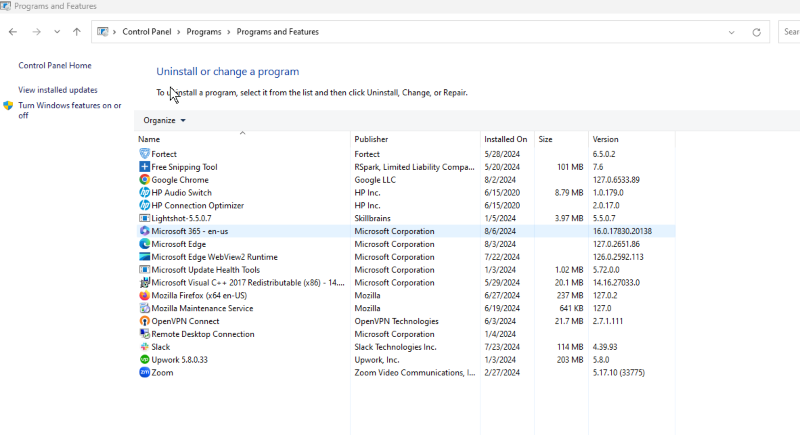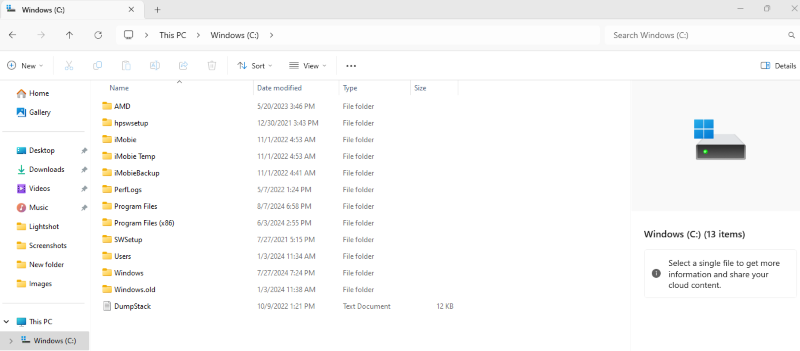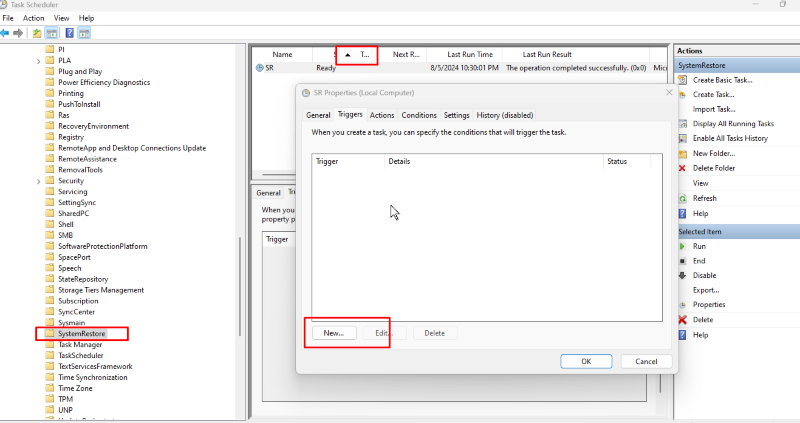System Restore Points are an essential feature in Windows 10, enabling users to revert their system to a previous state if problems arise. However, many users have encountered the issue of disappearing restore points.
Tweaking guide we will examine the reasons behind this problem and offer practical solutions to keep your restore points intact and readily available when needed.
8 Ways to Solve Windows 10 System Restore Points Disappearing
Check and Remove Problematic Programs
Some third-party programs, particularly antivirus software, can interfere with the System Restore feature. Identifying and removing these problematic applications often resolves the issue of disappearing restore points.

Steps:
- Open Control Panel
- Go to “Programs and Features.”
- Review recently installed programs
- Uninstall any suspicious or unnecessary software
- Restart your computer and check if restore points are now being created
Disable and Enable System Restore
Sometimes, simply toggling the System Restore feature off and on again can reset the functionality and resolve issues with disappearing restore points.
Steps:
- Right-click on “This PC” and select “Properties.”
- Click on “System Protection” on the left
- Select your System drive and click “Configure.”
- Click “Disable system protection” and apply
- Restart your computer
- Re-enable system protection following the same steps
Check Disk Space Usage
System Restore requires adequate free disk space to create and maintain restore points. Ensuring sufficient free space can prevent restore points from being automatically deleted.
Steps:

- Open File Explorer
- Right-click on your System drive (usually C:)
- Select “Properties.”
- Check the available free space
- If low, use Disk Cleanup to free up space
- Consider increasing the allocated space for System Restore in System Protection settings.
Check Volume Shadow Services
The Volume Shadow Copy service is essential for System Restore to function correctly. Ensuring this service is running can resolve issues with disappearing restore points.
Steps:
- Press Windows key + R, type “services.msc” and press Enter
- Locate “Volume Shadow Copy” in the list
- Double-click it and ensure “Startup type” is set to “Automatic.”
- If the service is stopped, click “Start.”
- Click “Apply” and “OK.”
Check Corrupted System Files
Corrupted system files can cause various issues, including problems with System Restore. Running a system file check can identify and repair these corrupted files.

Steps:
- Open Command Prompt as administrator
- Type sfc /scannow and press Enter
- Wait for the scan to complete
- Restart your computer and check if restore points are now being created
Check Restore Points in Safe Mode
Booting into Safe Mode can help determine if a third-party program or driver is causing issues with System Restore.
Steps:
- Restart your computer and press F8 during boot to enter Safe Mode
- Once in Safe Mode, check if restore points are available
- If they are, a third-party program in normal mode may be the culprit
- Exit Safe Mode and investigate recently installed programs or drivers
Or, to access system restore in Safe Mode, press the Windows key and r together, then type rstrui.exe into the Run box and press enter. Now before
Change Triggers in SR Properties
Modifying the triggers for creating restore points can ensure they are made more frequently and consistently.

Steps:
- Open Task Scheduler (type “Task Scheduler” in the Start menu)
- Navigate to Task Scheduler Library > Microsoft > Windows > SystemRestore
- Right-click on “SR” and select “Properties.”
- Go to the “Triggers” tab and click “New.”
- Set up daily or weekly triggers as desired
- Click “OK” to save changes
System Restore Point Alternative
While troubleshooting System Restore issues, consider alternative backup methods to ensure your System’s safety.
Steps:
- Use the Windows Backup and Restore feature
- Create a system image
- For more comprehensive protection, consider using third-party backup software like Tweaking. This software backs up user permissions and automatically creates system restore points, ensuring you don’t have to deal with the issue of disappearing Windows 10 system restore points again.
Download and install Tweaking now.
- Regularly back up important files to an external drive or cloud storage
Causes of Windows 10 System Restore Points Gone Missing
- Insufficient Disk Space: System restore points require a certain amount of disk space to store the data needed for restoration. If your disk is nearly full, Windows may automatically delete old restore points to free up space for new ones, which will disappear previous restore points.
- Corrupted System Files: System files can become corrupted for various reasons, such as sudden shutdowns, software conflicts, or malware. Corrupted system files can interfere with the creation and storage of restore points, causing them to disappear.
- Problematic Third-Party Programs: Some third-party software, especially those that manage disk space or create backups, can interfere with the system’s ability to create or retain restore points. These programs might delete or alter restore points without your knowledge.
- Disabled Volume Shadow Copy Service: The Volume Shadow Copy service is essential for creating system restore points. If this service is disabled, Windows cannot create restore points, resulting in their absence when needed.
- Malware or Virus Infections: Malware and viruses can disrupt normal system operations, including creating and storing restore points. They can delete or corrupt restore points to prevent you from restoring your system to a clean state.
- Windows Updates Gone Wrong: While Windows updates are meant to improve system performance and security, they can sometimes cause issues. An update might inadvertently delete restore points or interfere with the system’s ability to create new ones.
- Incorrect System Settings: Certain system settings, either altered manually or by software, can impact the creation and storage of restore points. For example, if the restore point creation is disabled or the allotted disk space for restore points is too low, Windows might not retain them properly.
Conclusion
Disappearing System Restore points can be a concerning issue, but with these solutions, you can often resolve the problem and ensure your System’s safety net remains intact. Remember to regularly check your System Restore settings and create manual restore points before making significant changes to your System.
If issues persist, consider seeking assistance from Microsoft support or a professional technician. Maintaining a healthy System Restore function and implementing alternative backup strategies can safeguard your Windows 10 system against potential issues and ensure quick recovery when needed.
Menzi Sumile
Verified at:
29/05/2024 06:37
Leave a Reply